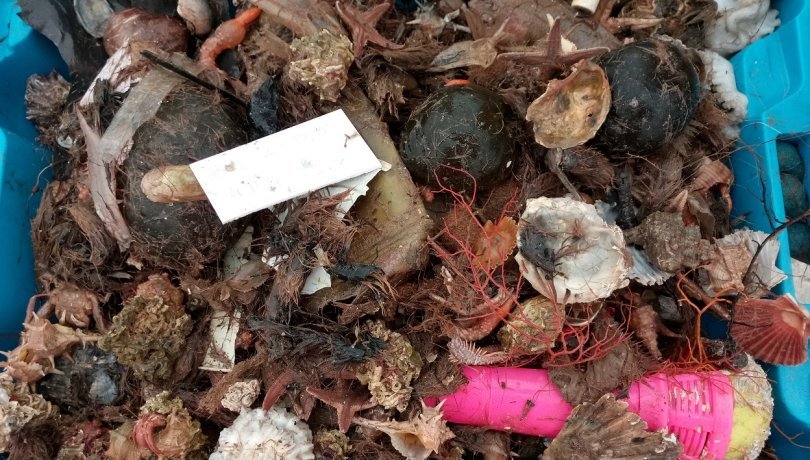Fisheries represent one of the main economic sectors affected by marine litter. The amount of garbage trapped in the networks can also damage ships and rigging. A study by the Institute of Marine Sciences has evaluated the amount and type of marine litter in the shallow waters of two fishing areas, the Delta del Ebro (Tarragona) and Vilanova i la Geltrú (Barcelona). Both areas are part of the Natura 2000 network.

Fisheries represent one of the main economic sectors affected by marine litter. The amount of garbage trapped in the networks can also damage ships and rigging. A study by the Institute of Marine Sciences has evaluated the amount and type of marine litter in the shallow waters of two fishing areas, the Delta del Ebro (Tarragona) and Vilanova i la Geltrú (Barcelona). Both areas are part of the Natura 2000 network.
The study, co-directed by Eve Galimany, scientist at ICM-CSIC, and Elena Marco-Herrero, scientist at ICM-CSIC then and now at the Balearic Islands IEO, was carried out with the collaboration of artisanal fishermen from both locations.
The results reveal that in the area of Vilanova i la Geltrú, close to very populated areas and very busy navigation routes, marine litter can be up to 38% of the catch in the network. The density of marine litter in these waters ranges from 198 to 393 kg per square km. The type of garbage found is varied: from slag (coal residue burned from steamboats), to textiles, plastics and processed wood (from furnitures and other products).
For its part, the Delta del Ebro rural area, has much less marine litter (between 34 and 56 kg per square km), which means “only” 5% of the total catches of the networks.
The researchers point out that it is difficult to say how these percentages are translated in kilograms in each type of fishery, because it depends on the art, the time of year, depth, state of the sea, among others. However, they add, “in our sampling in both areas, comparing surfaces of similar size, in the northern area we managed to extract a total 33 kg of commercial capture and 61 of garbage, while in the southern area, we extracted 74 kg of commercial fraction and 5 of garbage. The fishery studied is mainly from shallow seafood. ”
The results show the high density of marine debris accumulated in populated urban areas and its possible negative effect on fishing, explains Eve Galimany. "Plastics and fabrics can cause tangles and damage to the gears of ships, while wood can break the nets or damage boats by impact", she says.
"We propose to establish mechanisms for fisheries to help eliminate waste by reducing fishing costs and potential hazards to marine ecosystems," added Eve Galimany and Elena Marco-Herrero.
“Marine litter can cause a great impact on ecosystems, since its natural degradation requires a long time. Hence the importance of an improvement in waste management, which includes a fishermen reward program for returning marine litter to land, as we were once rewarded for returning glass containers, ”says Elena Marco-Herrero.
Miquel Illa Sagarra, fisherman from Vilanova i la Geltrú, explains that they have seen a large increase in marine litter in recent years. "People are not aware of what is thrown into the sea, it takes countless years to dissolve and there is no plan to clean the environment."
For his part, Casimiro Cabré Forné, fisherman from St. Carles de la Ràpita, comments that “although in the fishery we do we have not noticed so much, we do see that in beaches and coast , especially when there is temporary, more and more plastics, bottles, garbage arrive… ”.
“The fishermen are the first ones interested in having a clean sea,” adds Cabré. “I would say that most of us here in St. Carles de la Ràpita, if not all, collect all the plastic and garbage that goes out on each fishing day, and when we throw it in the containers "
Although it was already known that areas near very populated areas accumulate more garbage, this is the first work that quantifies marine litter within a fishery.
VÍDEO: "¿Cuánta basura se recoge en la pesca en áreas cercanas a ciudades?"
Source: E. Galimany, E. Marco-Herrero, S. Soto, L. Recasens, A. Lombarte, J. Lleonart, P. Abello & M. Ramón. (2019). Benthic marine litter in shallow fishing grounds in the NW Mediterranean Sea. Waste Management. 95. 620-627. 10.1016/j.wasman.2019.07.004.
Press release: Delegación CSIC Cataluña